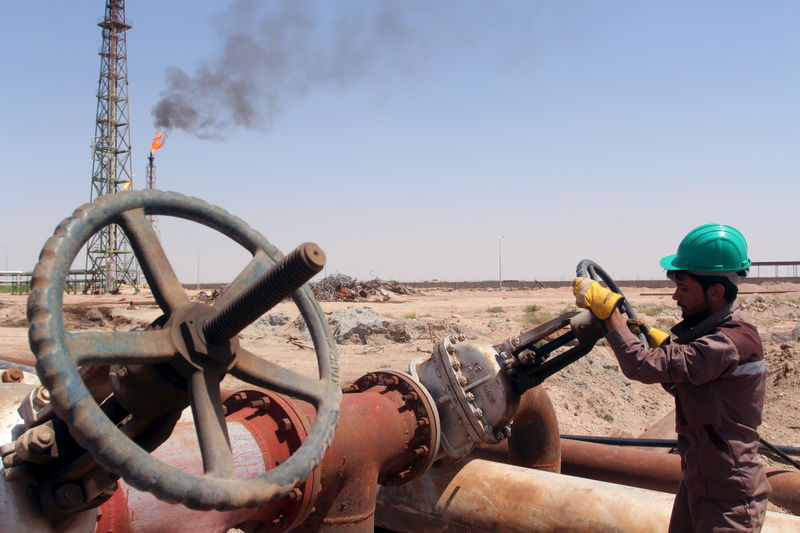* Iran downplays chance of output freeze, some in OPEC hopeful
* Market volatility at its highest since April
* Any deal unlikely be acted on till OPEC Nov meet -analysts (Recasts, updates market activity and comments to settlement)
By Barani Krishnan and Amanda Cooper
NEW YORK/LONDON, Sept 26 (Reuters) - Oil settled up 3 percent on Monday as the world's largest producers gathered in Algeria to discuss ways to support prices, with nervous trade driving volatility to its highest since a similar meeting to freeze output in April in Doha which failed.
The Organization of the Petroleum Exporting Countries and other oil producers led by Russia are meeting informally on the sidelines of the International Energy Forum in Algeria from Sept. 26-28 to tackle a crude glut that has battered prices for two years now. OPEC member Iran, the fourth largest crude exporter which is still trying to recapture output before Western sanctions in 2012, downplayed the chances of a deal while some OPEC members remained hopeful.
"Unless there's an impressive production cut by OPEC on top of a freeze, I think we'll give back everything we've gained by the end of this week," said Tariq Zahir, an oil bear at Tyche Capital Advisors in New York.
Brent crude futures LCOc1 settled up $1.46, or 3.2 percent, at $47.35 a barrel after trading between $45.74 and $47.66.
U.S. West Texas Intermediate (WTI) crude futures CLc1 rose $1.45, or 3.3 percent, to settle at $45.93 after a session high of $46.20 and low of $44.43.
Both benchmarks moved in a near $2-band between the highs and lows, one of the widest swings in weeks.
Implied volatility, a gauge of how much oil prices move, was at its highest since April 18, when the meeting in Doha among OPEC members to discuss an output freeze ended in an impasse, leaving crude at just above $40.
Scepticism about a deal being reached in Algiers had prompted money managers to cut their bullish bets on U.S. crude futures to a one-month low last week, with prices falling nearly 5 percent. CFTC/
Some analysts believe an output freeze will only be implemented after OPEC's all-important policy meeting beginning in Vienna on Nov. 30. Until then, the group and non-members, including No. 1 producer Russia and top oil consumer the United States, are likely to ramp up production.
OPEC pumped near a multi-year high of 33.24 million barrels per day in August, data showed. Russian production hit record highs of 11.75 million bpd last week. U.S. output has fallen this year but its oil rig count, which signals future production, has risen for 12 of the past 13 weeks. RIG/U
"If more Libyan and Nigerian production come online and Iranian production continues to increase, then by November the surplus could be high enough and prices low enough to encourage OPEC to act," said James Williams, analyst at WTRG Economics in London, Arkansas.
A Reuters poll showing that U.S. crude stockpiles had risen by as much as 2.8 million barrels last week after three prior weeks of declines also caused concern for some market participants, analysts said. EIA/S
<^^^^^^^^^^^^^^^^^^^^^^^^^^^^^^^^^^^^^^^^^^^^^^^^^^^^^^^^^^^ GRAPHIC on Brent oil
http://tmsnrt.rs/2cZ8yYD GRAPHIC on U.S. crude oil
http://tmsnrt.rs/2dkYmF7
^^^^^^^^^^^^^^^^^^^^^^^^^^^^^^^^^^^^^^^^^^^^^^^^^^^^^^^^^^^>
